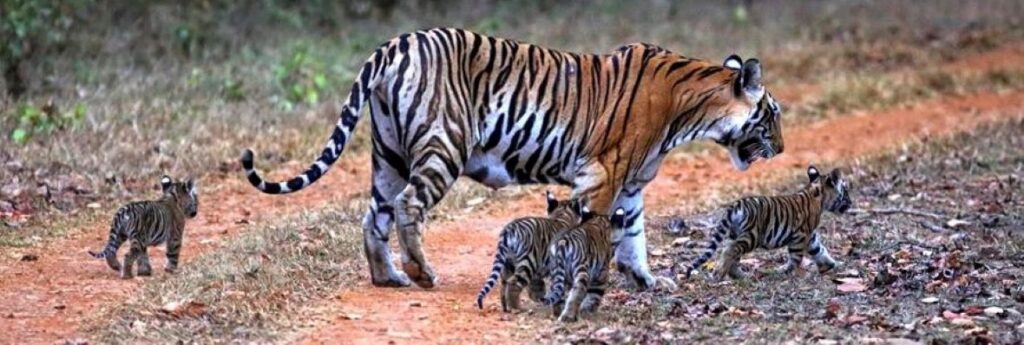Marking 12th annual Global Tiger Day today (July 29) and 2022 as Year of the Tiger, Natural Habitat Adventures is shining the spotlight on the plight of the iconic but highly endangered animals with the aim of enhancing support for big cat conservation.
Global Tiger Day was established in 2010, the previous Year of the Tiger. That same year, the Global Tiger Initiative was formed, and the first-ever international meeting for tiger conservation – the St. Petersburg Tiger Summit – was convened. Known as TX2, the event and initiative saw collaboration across the 13 tiger range countries and the global conservation community towards a common goal for tiger recovery: doubling the number of tigers in the wild by 2022.
The effort has been paying off with major strides in tiger recovery: in 2010, there were just 3,200 wild tigers left in the world. That number has grown, with new figures now revealing that there are currently between 3,726 to 5,578 tigers in the wild worldwide, according to a new tiger assessment from the International Union for Conservation of Nature (IUCN) and representing a 40% increase since the IUCN’s last tiger assessment in 2015.
According to the report “improvements in monitoring, showing that there are more tigers than previously thought, and the number of tigers globally appears to be stable or increasing.”
Through this strategic, long-term approach, where countries have been able to increase protections where tigers are currently, engage local communities as leaders and partners in conservation, maintain or restore wildlife corridors between areas, and boost resources to secure a future where tigers and people can co-exist, tiger numbers are rising.
For its part, Nat Hab has provided more than $4.5 million in support to global conservation efforts and gives 1% of all gross sales plus $150,000 annually to help conserve nature and reduce the most pressing threats to the diversity of life on Earth.
Through its mission of “conservation through exploration,” the tour operator says it is striving to protect the planet by inspiring travellers and supporting local communities, including in India where it operates tiger-focused journeys.
“Sustainable, sensitive ecotourism has also played an integral role in helping to bolster wild tiger numbers, with the economic impact of visitors to India’s tiger reserves benefitting the communities nearby – providing jobs and offering local people an incentive to protect the wildlife with which they share the land,” says Court Whelan, Chief Sustainability Officer at Natural Habitat Adventures. “Given that India is home to 70% of the world’s wild tigers, the presence of wildlife tourism here is integral to that continued conservation success.”
Nat Hab operates three tiger-focused trips in India, where tiger sightings continue to be on the upswing. The company credits the concerted effort between the government, NGOs, and many individuals, notably the “tireless and thankless efforts” of those on the ground like the forest guards and field scientists, for bringing the wild tiger population from dismal levels in the mid-2000s to a healthier one that is more than double that number today.
However, the company cautions that now is not a time for complacency as there is still a long way to go in ensuring the habitat of these flagship animals is not further lost, which is a challenge in a country with a growing human population and substantial economic needs.
But the gains made in the wild tiger numbers are translating directly into Nat Hab’s guests now having a very good chance seeing one or more of the cats on one of the trips.
“It is not uncommon now to see entire litters of cubs, four or five of them surviving to adulthood,” says Conan Mark Dumenil, one of Nat Hab’s lead India Expedition Leaders. “This is unprecedented and unheard of, because until recently the survival rate of tiger cubs was about 50%.”
He adds, “Seeing a tiger in the wild for the first time leaves an indelible mark on your soul. You’ll never forget it. Travellers need to visit, see, and learn about wildlife if they are going to relate to it and perhaps go back and advocate for its survival.”

